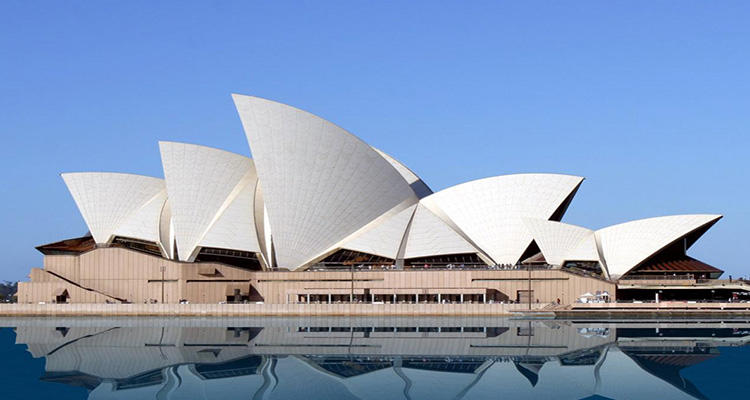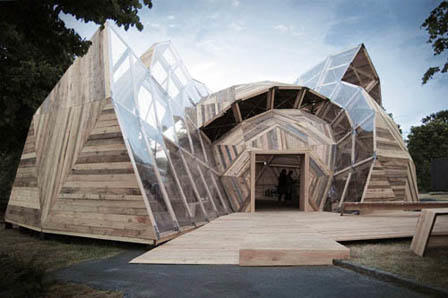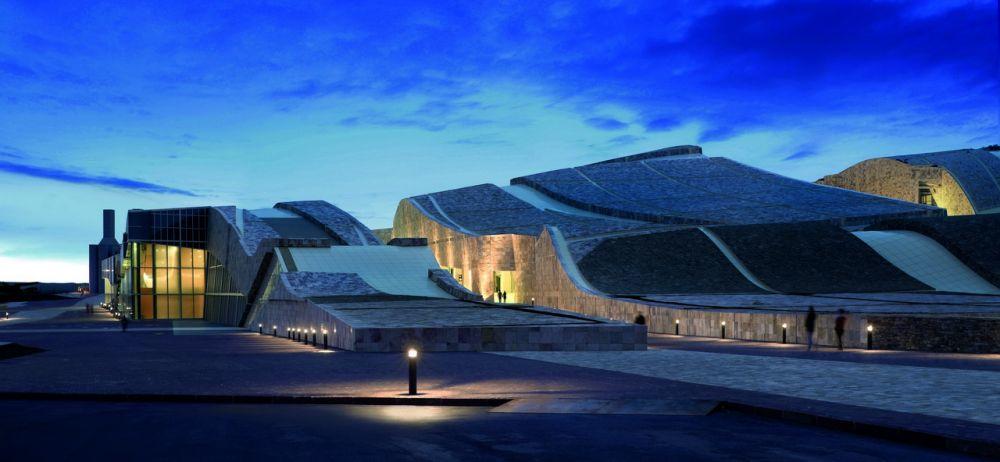Introduction
People have always been appreciating beauty in all its forms. Since ancient times, we were able to admire a magnificent landscape, wonderful sunrise, gorgeous mountains, a beautiful person. The great thirst for beauty resulted in the first attempts to immortalise it using sculptures, paintings, architecture, etc. In other words, people explored art as the main method to embody their vision of beauty and admire it.
However, the given concept is extremely changeable. In the course of their evolution people obtained new values that impacted their vision of the world and resulted in the appearance of new ideals of beauty. That is why nowadays we admire things and features that differ from the concepts of beauty peculiar to past times. It is possible to assume that the vision of beauty alters along with our society to be able to reflect the main preferences and attitudes to different phenomena. Today we could observe a great diversity of styles that comes from the heterogeneous character of the modern world and globalisation that stimulates cross-cultural interaction.
Additionally, significant shifts in peoples mentalities also precondition the constant search for new forms that could be used to express their feelings. The combination of these aspects results in the appearance of new styles. Modernism could be considered one of these as it was created to satisfy peoples need for new forms and emotions. For a long period of time it had been dominating; however, nowadays, we can observe that it is being replaced by deconstructivism that criticises the dictates of modernism and introduces new tendencies.
Background
As stated above, the 20th century could be characterised by the increased number of different styles that appeared under the impact of critical alterations in peoples mentalities. Unique events like civil rights movements, world wars, revolutions, etc. impacted individuals consciousness greatly and preconditioned the appearance of new demands to style and to the concept of beauty. People wanted an approach that would be able to embody their new vision of the world and their feelings.
The constant search for new forms resulted in the revolutionary reconsideration of the approach to design. Being tired of standard shapes and methods, people started to use new and sometimes incongruous motifs to make their creativity more diverse. It resulted in the evolution of numerous styles that differed from traditional ones greatly and introduced a new era characterised by the great freedom of self-expression and allowability of extremely radical approaches. Besides, modernism and deconstructivism could be considered one of these as they combine the usage of unusual shapes and figures to impress a person and make him/her admire unusual forms.
Modernism

Besides, modernism became a unique phenomenon in the art of the 20th century as it combined the philosophic approach to life with new cultural trends and changes. It appeared in the course of the deep transformation of the Western society, its value system, and philosophy. Moreover, the blistering rise of industrial societies also stimulated the rise of this movement. Finally, the WWI was another great event that contributed to the collapse of old ideas and appearance of new ones.
The unique power of this movement could be proved by the fact that the 20th century is mainly associated with modernism and its numerous forms. It is characterised by the innovative approach to traditional things. The adherers of this style tended to create something extremely new and challenging to attract peoples attention and make them think about the unique character of the new epoch and its spirit.
Experiments with forms, irony, self-consciousness, and disregard of social traditions are the most important features of modernism that preconditioned its evolution in a certain way. Today, we could still observe numerous examples of this style as a number of artists consider themselves to be modernists and create their artworks in terms of this very style.
Deconstruction

However, at the end of the 20th century, people met new challenges and a new process of the reconsideration of values started. Modernism remained topical; however, it was not able to express all palette of feelings and emotions. Additionally, people got tired with the prevalence of this style and started to look for new approaches that would be able to meet their demands. For this reason, postmodernism as a new direction in art appeared.
It derived from modernism; however, it became another great step in the evolution of peoples approach to art. Postmodernism encompasses an array of ideas and motifs like scepticism, irony and distrust towards the traditional approaches and norms established by previous generations. All these unique features also gave rise to such school as deconstructivism that is often associated with postmodernism. Besides, it is a movement that appeared at the end of the 20th century. It is aimed at the creation of the impression of fragmentation of the constructed building, the absence of harmony, symmetry, confusion of shapes and approaches.
It could also be characterised by the usage of non-rectilinear shapes and distorted perspectives that are introduced to emphasise the feeling of chaos, anarchy, and the absence of some general idea. Relatively soon, it became extremely popular because of its unique character and deliberate disdain of traditional forms and approaches. The evolution of this style coincided with the blistering rise of technologies which make it even more topical as deconstructivism was able to reflect the spirit of an epoch and create artworks characterised by futuristic appearance and unusual shapes appreciated by digitalised society.
Modernism vs. Postmodernism
The extreme popularity of the above-mentioned styles resulted in their widespread in the modern society. The modern art could be characterised by the outstanding usage of both modernism and deconstructivism because of their topicality and ability to express feelings peculiar to people living in the modern fast changing world. Moreover, very often these styles interpenetrate in each other and precondition the appearance of new tendencies and approaches.
However, there is also a certain rivalry between modernists and deconstructivists which comes from the divergence in the perspectives on the further evolution of art and shapes that should be used to impress people and attract their attention. For this reason, the modern design could be characterised by the opposition of these two approaches and debates related to the character of art and artworks created in their terms.
Both modernists and deconstructivists have strong arguments that are used in debates and explored to underline the unique importance of these styles. Thus, in last several years, deconstruction in design practice tends to subvert the dictates of modernism to proclaim the dominance of a new style and cultivate its further evolution.
Evolution of Society and Style
As stated above, the given evolution of style is also preconditioned by the increased importance of technologies and their penetration in different spheres of human activity. Observing the rise of science, people need some material proof of their great achievements in this very sphere. For this reason, more and more futuristic forms and shapes are used.
Curved lines, shapeless figures, unearthly contours attract people. Designers try to follow the spirit of the epoch and create artworks that will be able to inspire individuals and make them think about the unique character of the epoch in which they live.
Deconstructivisms Prevalence
These facts could also be used to explain the prevalence of deconstructivism over modernism. The absence of harmony and symmetry became one of the most recognised motifs of the modern world, and deconstructivist designers explore this pattern.
They also proclaim their rejection of the ordered rationality of modernism because of its inability to satisfy peoples needs anymore and its outdated character. Comparing these two approaches, deconstructivist one could be considered revolutionary as it does not accept historical references to previous styles and refuses to follow traditional patterns accepted in design. Instead, it criticises modernist acceptance of certain rules and historical references often used by artists who create their works in terms of this very style. Moreover, deconstructivism tends to terminate the dictate of previous styles that had been impacting people for a long time.
That is why it introduces an extremely new approach based on the disregard of any rules or limitations introduced by various authorities. The usage of geometry instead of traditional ornaments is also explored to attract attention to the unusual style and make people think about the real image of the modern world. For this reason, the term deconstructivism perfectly expresses the nature of the new movement which is focused on the deconstruction of previous approaches and usage of new more innovative ones. It subverted the functional aspects of modernist simplicity and substituted them with new more complex and sophisticated features.
The opposition between these styles resulted in a certain split in the artistic community. The adherers of modernism continued to create their artworks in accordance with the traditions established by the modernist movement. However, along with their creativity, another wave of artists working in deconstruction style appeared. One of the motifs that impacted their creativity and new artworks was to show the modernisms inability to dictate rules anymore.
Analysing the modern approaches to design and the most popular patterns, we could assume that deconstructivism managed to subvert modernism with its outdated features initiated the reconsideration the approach to design in general. This could be seen in works of new artists who become extremely popular due to their disregard of shapes and modernist patterns.
Marcel Breuer
Nevertheless, delving into the main aspects that differentiate modernism and deconstructivism, it is also crucial to compare designers and their artworks to understand the main convergences in their approaches to style and ways of expressing different feelings and emotions. The given comparison could also help to trace the evolution of style and shifts towards postmodernism with its new shapes and elements.
For instance, Marcel Breuer and Peter Eisenman are bright representatives of their styles. Being great designers, they managed to create numerous artworks that enriched the modern art and contributed to its further development. For this reason, their masterpieces could be considered vivid enough to demonstrate convergences in style.
Therefore, Marcel Breuer is a German and American art designer who created his masterpieces in terms of modernism. Despite the fact that he became famous due to his unique furniture, he was also fascinated by architecture and managed to develop his own unusual architectural style.
First of all, it combined the usage of unusual shapes for all Breuers buildings which resulted in their innovative appearance. Sometimes bold and imposing, sometimes full of movement, they, however, attracted peoples attention and demonstrated the great power of modernism in all its beauty. Moreover, Breuers style also encompasses the usage of heavy, concrete, and sometimes even ugly forms to create the final image.
Combining these elements, he managed to create and unusual beauty of his houses and express his idea of modernism and the modern architecture. For instance, the building of the Church of St. Francis of Sales in Muskegon, Michigan is one of the most strange buildings of this sort.

It embodies the artists most favourite designs and could be considered a perfect example of Breuers creativity. Its ” tall fluid, twisting lines marked the history of architecture as this unprecedented style had never been seen before.”
The usage of these shapes results in seeming weightlessness of the construction and its elegance. The building looks extremely unusual and even inappropriate at the first gaze; however, this very church attracts attention and inspires people which is extremely important. It demonstrates that the designer managed to cope with his task and create a masterpiece that triggered numerous discussions and contributed to the evolution of modernism greatly.
Peter Eisenman
Peter Eisenmans approach to style is different. Being a deconstructivist, he opposes himself to modernism stating that new approaches are needed. His perspective on design includes attempts to consider the layer of physical and cultural categories each object should possess, but not just some obvious and notable contexts that are trite and overused. Moreover, the majority of his artworks could be characterised by the unusual style that is explored to create a specific environment and impress individuals.
Analysing his works, it is difficult to find common features as Eisenman rejects using stereotypical or archetypical patterns preferring to take into account peculiarities of every project and specific features that come along with it. The only thing that unites all his artworks is the extreme diversity of shapes and dissymmetry that is often explored by postmodernist designers. His famous City of Culture of Galicia perfectly proves this statement.

It is a unique building that demonstrates the gist of postmodernism. The designer refuses to use traditional shapes and curves; instead, Eisenman creates objects with asymmetric and sometimes even chaotic lines. The six buildings of the project should be taken as three pairs united by some common motifs. The given ensemble impresses a person by the unique diversity and combination of different elements.
Besides, “the heights of all of the buildings rise in gentle curves that seem to reconstruct the shape of the hilltop with their collective rooflines, which are all clad in stone and marked with the grids that inform the design of the site.” The City of Culture of Galicia embodies modern approaches to style and peoples need for new elements of décor and design.
Comparison
Besides, if to compare these two unique artworks, the difference in approaches becomes obvious. Breuers Church is full of straight lines and symmetry. It seems very solid and monumental, but, at the same time, there is also the feeling of weightlessness that appears when looking at the construction. The designer manages to achieve this effect due to the curved shapes of back walls and the combination of solid and light elements. The building is impressive and unusual; however, it could be considered the part of the modernist discourse.
Opposing it to Eisenmans Museum of Galicia, the difference becomes obvious. If the first construction could be considered the embodiment of modernism, the second one is a perfect example of deconstructivism with all its unique features. Dissymmetry, curved lines, different heights, the gorge of objects, and seeming chaos differentiate the building from other artworks and contributes to its increased artistic merit.
Conclusion
Altogether, the modern age could be characterised by the appearance of new elements of design and styles that are expected to satisfy peoples altered demands to beauty and reflect the spirit of the epoch perfectly. Thus, modernism that had been dominating during the bigger part of the 20thcentury became outdated and was subverted by postmodernism, and its derivates like deconstructivism.
Comparing the art objects created in terms of these approaches, the difference becomes evident. When Breuers construction combines correct perspectives, direct and curved shapes along with solid elements of design, Eisenmans building is chaotic. Twisted lines are combined with different heights and unusual perspectives. That is why The City of Culture of Galicia looks modern and even futuristic. It represents the future of design as it embodies the most topical demands to style peculiar to individuals living in the coherent society.
Bibliography
“AD Classics: 1988 Deconstructivist Exhibition at New York’s Museum of Modern Art (MoMA).” ArchDIaly. Web.
Butler, Christopher. Modernism: A Very Short Introduction. Oxford: Oxford University Press, 2010.
Butler, Christopher. Postmodernism: A Very Short Introduction. Oxford: Oxford University Press, 2003.
“Eisenman’s Evolution: Architecture, Syntax, and New Subjectivity.” ArchDialy. Web.
Eshelman, Raoul. Performatism, or The End of Postmodernism. Aurora: The Davies Group Publishers, 2008.
Gura, Judith. Postmodern Design Complete: Design, Furniture, Graphics, Architecture, Interiors. London: Thames & Hudson, 2017.
Heller, Steven. Design Literacy, Understanding Graphic Design. New York: Allworth Press, 2004.
Kirby, Alan. “The Death of Postmodernism And Beyond.” Philosophy Now 119, (2017). Web.
Outhouse, Michael. “The Influence of the Postmodern Graphic Design Genre on Contemporary Graphic Design as Analyzed in the Context of Generic Participation.” Graduate Theses and Dissertations, (2013): 1-68. Web.
Malpas, Simon. The Postmodern, The New Critical Idiom. New York: Routledge, 2005.
“Marcel Breuer (1902-1981): Design & Architecture.” Yatzer. Web.